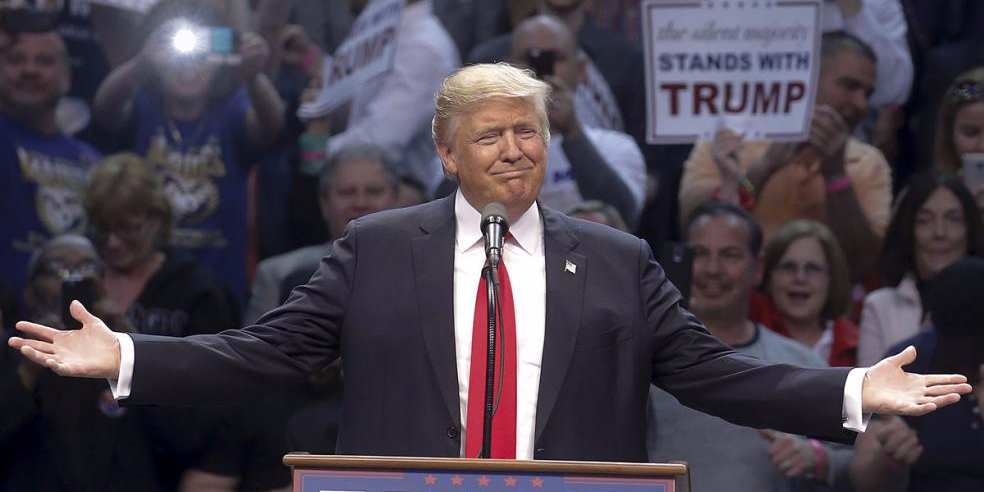President Donald Trump vowed throughout his campaign that he’d overhaul the US tax system, simplifying it and putting money back in the pockets of American citizens.
Trump’s proposed plan, if enacted, would almost certainly deliver on that first promise: It will pare down the seven current income tax brackets to just three, and it will eliminate personal exemptions in favor of increasing the standard deduction, among other changes geared at streamlining the tax code.
But will the plan result in more money for US workers? Taxes, unfortunately, remain stubbornly complicated – even in a system overhauled for simplicity.
For most people, the answer would be “yes.” But it depends on who you are. Some of the simplification measures mean valuable tax breaks – like the head of household filing status – will vanish, leaving millions of families, including more than half of single parents, with a higher federal tax burden than in previous years, according to a report by the Urban-Brookings Tax Policy Center, a nonpartisan think tank.
The Tax Policy Center has analyzed the Trump administration’s proposed tax plan, comparing it with the current tax code to show who stands to gain the most – and who will wind up a loser – if Trump’s plan becomes the law of the land.
Below, we break down the some various tax scenarios and how they affect different people. It's important to keep in mind: No law has been passed, so nothing as yet is a given. While their plans share similarities, Trump and House Republicans don't agree on everything. It seems likely the main contours of Trump's plan will come to legislative fruition, but our chaotic political climate has banished certainty to the quarters of the foolish.
Read on to see how your wallet would be affected under Trump's tax plan.
First off, here's a quick synopsis of some of the main changes that will affect people.
• Instead of seven, we'd now have only three income tax brackets.
Current: 10%, 15%, 25%, 28%, 33%, 35%, 39.6%
Proposed: 12%, 25%, 33%
• The standard deduction will go way up. It jumps from $6,300 to $15,000 for singles; for married joint filers it jumps from $12,600 to $30,000.
• Personal exemptions and exemptions for dependents are eliminated, as is the head of household deduction.
• Families with children under age 13 can deduct childcare costs, capped at the state average.
• The Alternative Minimum Tax, a complicated surtax that raises rates on middle- to upper-middle class earners, would be axed. It currently affects nearly 5 million people.
• Gift taxes and estate taxes are gone; capital gains held until death are exempt up to $5 million per individual.
Overall, under Trump's plan, every income level would see their average federal tax rate decline.

The Tax Policy Center analysis isn't just looking at income tax. It accounts for: individual and corporate income tax, payroll taxes for Social Security and Medicare, the estate tax, and excise taxes.
So, Americans at every income level would on average see more money in their pockets. The gains, in raw dollars, are largest for high-income earners.

Here's what those savings look like measured as a percent increase to after-tax income. Again, higher-income earners will see their tax savings increase the most — both by dollars and by percentage.

For married couples filing jointly, the average increase is slightly less in most cases.

One reason for the slight dip? The elimination of personal exemptions.
While the proposed plan increases the standard deduction for married couples from $12,600 to $30,000, many married couples also have children who count for additional exemptions they would lose under the new plan. Since each exemption is currently worth $4,050, couples with three children or more would get a larger deduction under the system we have now than the proposed plan.
Five exemptions - one for each parent and each of the three children - is worth $20,250. After factoring in the $12,600 standard deduction, a couple today would reap a break of $32,850, compared with the flat $30,000 under Trump's plan. That discrepancy would grow with each child added into the picture.
Now, this would be offset to a degree by a proposal to allow families to deduct the average cost of childcare, but not enough to cover the difference in many cases, according to a Tax Policy Center study.
That decrease in tax savings becomes more apparent when you isolate just for tax filers with children.

This chart includes single parents, who would lose their head-of-household filing status under the new plan. Most parents still get some tax cut, but those earning between $20,000 and $50,000 would see their taxes increase.
But head-of-household filers, as a group, fare the worst on average. It's not a huge increase, but these filers who earn between $20,000 and $200,000 will see their federal taxes go up, rather than receiving a tax cut. For many of these families, though, every dollar counts.

What is the head-of-household status, and why are these people hit the hardest overall?
The head-of-household status applies primarily to single parents (you're not eligible if you're married) and comes with a higher standard deduction than single filers without dependents - $9,300 compared with $6,300.
Under the current law, a single parent with one child would receive $17,400 in deductions - two personal exemptions worth $8,100 plus the $9,300 head of household deduction - compared with the flat $15,000 deduction under Trump's plan.
That loss of income becomes more stark with each child added to the picture: A single parent with three children is looking at over $10,000 lost deductions under Trump's plan - $25,500 compared with $15,000.
